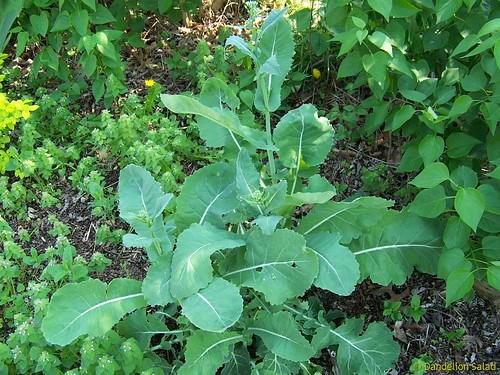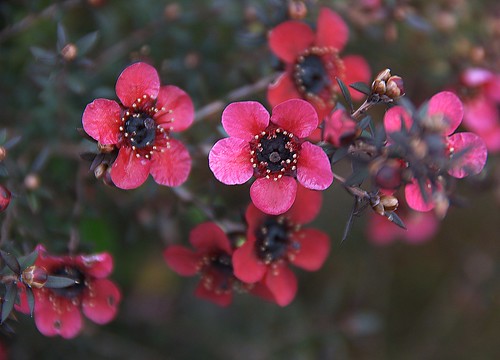Real World Gardener is funded by CBF, Community Broadcasting Foundation.
REALWORLD GARDENER NOW ON FACEBOOK
The complete CRN edition of RWG is available on http://www.cpod.org.au/ , just click on 2RRR to find this week’s edition.
Design Elements
with Landscape Designer, Louise McDaid |
| Long thin gardens benefit from horizontal lines to make them look wider. |
Let’s find out how we deal with a garden that’s long and thin..
Horizontal lines were the main design tip to give your garden the illusion that your garden seems a bit wider than it is.
Hedging horizontally will give you that look. Then there was that fabulous tip about concave steps.
Why not try it some of these tips out if you have that type of garden?
There’s a lot of information in that design element so listen again for all the tips.
We’d love to see photos of any change you’ve done the garden, or perhaps just write in the details and send it in to. realworldgardener@gmail.com or write in to 2RRR P.O. Box 644 Gladesville NSW 1675
Vegetable Heroes
Collard Greens. Botanically Collards are Brassica oleracea var. acephala, or from the Acephala Group. Acephala means"without a head" in Greek.
- The answer to the question as to which veggie can cure headaches is Collards, of course?Old wives tales reckon that if you hang a fresh collard leaf over the door you’ll keep bad spirits away, and a fresh leaf on the forehead is said to promise a cure for a headache.
- What are Collard Greens? Are they Kale? No, they’re not.
- More like an open sort of cabbage or a leafy, green vegetable that forms small, cabbage-like heads.is heat tolerant so a good substitute for kale and cabbage in tropical areas.
- Collards also tolerate light frosts so not bad for cooler areas either.
- Ancient Greeks grew kale along with collards, and the Romans grew several kinds of collards before the Christian era.
- Had you heard of Collards before or grown it? Let us now how you went.
- Apparently Collards in food are found in almost every meal in Kashmir, Brazil and Portugal.
- Where do you get it?
- There’s quite a few online suppliers of Collards, or collard Greens.
- Online suppliers (EDEN SEEDS www.edenseeds.com.au. www.greenharvest.com.au and
- www.thelostseed.com.au www.cornucopiaseeds.com.au Ph 0458546750) have anywhere between one, two or three varieties.
- The first one is Champion, that they describe as having tender smooth-leaved large greens, high in vitamins A and C. Cold hardy. This champion variety tolerates poorer soils than other brassicas and is ready in 60-75 days.
- The other is Georgia Southern, an old standard, pre 1880, which has open blue-green slightly crumpled juicy leaves to 1m. this plant can take heat and poor soil, also tolerates light frost which improves its mild cabbage-like flavour. The large, succulent, ruffled, deep blue-green leaves form a loose rosette like an open cabbage; no head is formed. Days to harvest: 60 - 75.
- A third variety is Morris Heading- Heirloom first introduced in 1919 by Morris Plant Farm. This variety has a wide, slightly crumpled, waxy, blue-green leaf with light green veins. The grower describes it as an extremely tender variety, that grows as a compact bush and is slow to bolt; Morris Heading also tolerates heat & cold. And is ready in about 52-85 days...that’s about 8 weeks.
- A fourth variety is called Vates that has dark green, thick leaves high in nutrients. This variety dates back to the 1950’s. Did your parents grow this perhaps?
- Remember that rule about the darker green the leaf is on any vegetable that’s got edible leaves, the more nutrients it has.
- Grow it during the cool season to use as a nutritious, steamed, tender green with a delicious, mild cabbage flavour.
- Collards like well drained soil with near neutral pH and sunny spot.keep well watered. Mature plants tolerate frost. Sow late summer and autumn.
- For best flavour and texture, leaves should be picked before they reach their maximum size
- WHEN TO SOW:
- In tropical areas you can grow them from April until September, March until September in sub-tropical zones, March until August for arid areas and for temperate districts, February until May. Finally, in Cool temperate areas, you have from January until the end of April, so not long to go for you guys.
- You might be wondering how to pick this rather loose leafy green that’s a cabbage substitute.
- Not having grown this plant myself I’ve read that whole young collard plants can be cut or the tender leaves at the top stripped off.
- A cluster of leaves may be picked a few at a time when you need them and before they mature so as not to be tough.
- As the plants are gradually stripped of their lower leaves, they may need the assistance of a stake to support the top cluster.
- Seems like if you’ve only got a small family, or only one or two people in the household only likes the flavour of cabbage, Collards would be the most convenient and least wasteful way of growing cabbage like plants.
- Why Are Collard Greens Good For You?
- Collards are similar in nutrients to kale.
- The leaves are high in vitamins A and C and also high in soluble fibre.
- There’s also a small amount of protein potassium and calcium.
Plant of the Week
NEW Leptospermum varieites.At a wholesale nursery located 30kms north east of Canberra, near the old gold mining settlement of Bywong, Bywong Nursery have a programme of breeding and selecting new varieties of Australian plants.
They then supply tubestock plants to other wholesale nurseries that grow these plants on to a bigger size before it get’s to the retail garden centres. Let’s find out how to grow some of these new varieties of tea trees in your garden.
There are many new varieties of tea trees with flowers about 2cm across and coming in brighter colours than you’d expect.Tea tress have smallish leaves and if you want to make you garden seem bigger, put smaller leaves plants in the background, and if you want your garden to seem like it’s closer to you, plant the smaller leaved plants in the foreground.
Give it a try. Ask for the new varieties by name at your garden centre.
Leptospermum “Merinda” www.bwongnursery.com.au
A small evergreen shrub that is covered in vibrant magenta flowers in spring. Early growth can be spreading or cascading but it will develop into a rounded shrub approximately 1m high. This variety is sterile and will not set seedpods.
 Leptospermum 'Merinda" was developed in a breeding programme from a cross between Leptospermum
'Pink Cascade' and Leptospermum 'Aphrodite'.
Leptospermum 'Merinda" was developed in a breeding programme from a cross between Leptospermum
'Pink Cascade' and Leptospermum 'Aphrodite'. Ideal for small gardens or courtyards. Attractive tub specimen. Gives a bright splash of colour in spring.
Tea trees attracts a wide variety of native insects when in flower. These insects attract native birds and other wildlife.
Trim and fertilize after flowering as required.
Another variety is Leptospermum morrisonii a wild selection for foliage colour (Burgundy).
Leptospermum morrisonii 'Burgundy'Description: An attractive tall shrub with striking burgundy coloured new growth. It has an abundance of large white flowers during summer. Grows to approximately 3m high by 1.5m across. Origin: Selected from a wild population for its foliage colour.
Leptospermums make good for a fast growing screens or hedges.
Useful for cut foliage in floral arrangements.
These shrubs also attract a wide range of nectar feeding insects.
Leptospermums or tea trees grow best in full sun and tolerate wet soils and frosty conditions.
Plant partners-silver foliaged plants, eg, Lamb’s ears, Artemisia (wormwood), lavender.

No comments:
Post a Comment